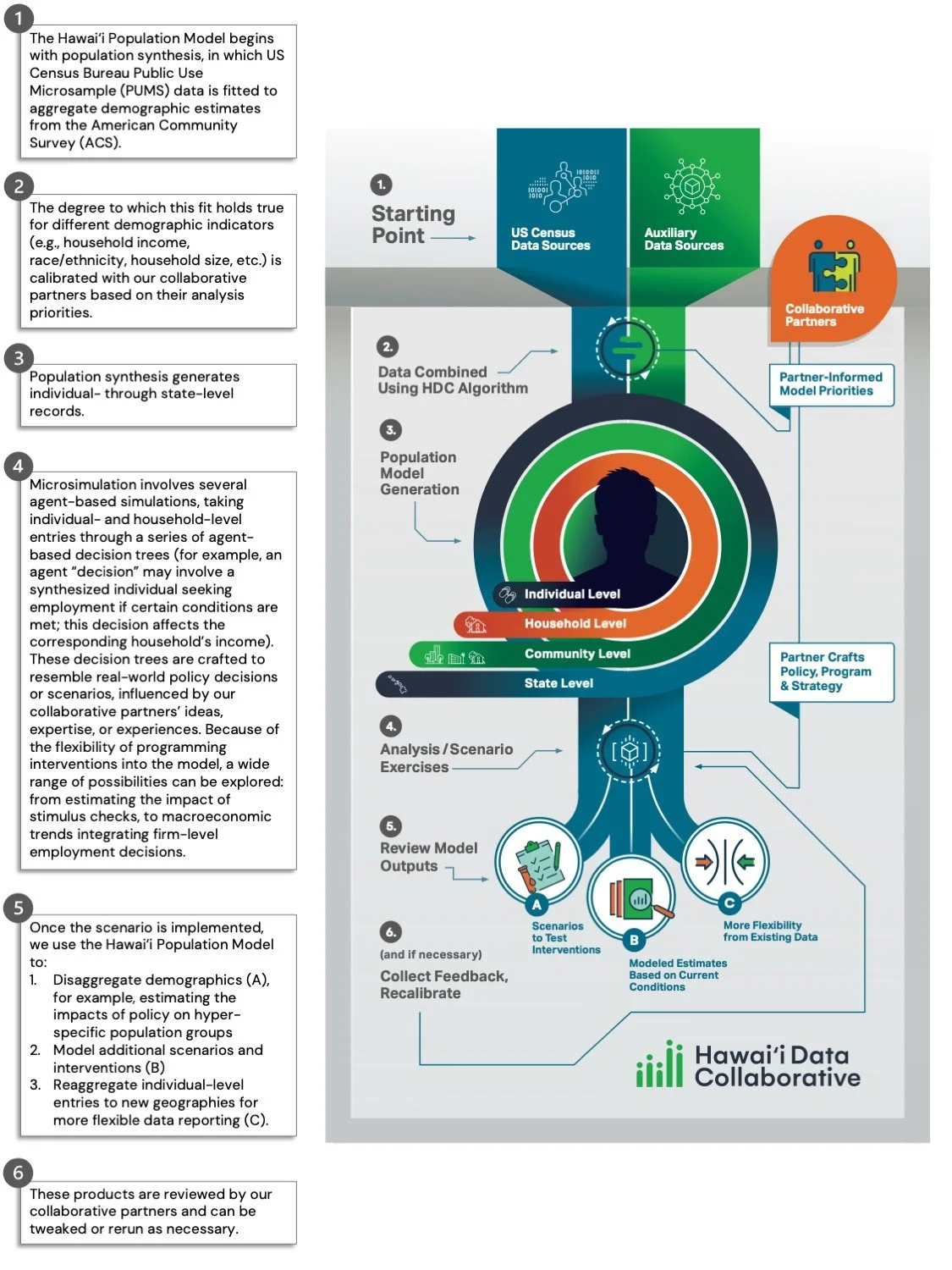
Hawai‘i Population Model

Imagine if…
Community leaders, legislators, and public officials could:
Model public policy interventions like changes to the state’s minimum wage, affordable housing strategies, and emergency response planning;
Generate estimates of individuals or households with particular or layered demographic characteristics like the number of single-earner households, with two children, that own at least one car;
Supplement existing surveys and datasets with richer, fuller insights (e.g., analyze well-being survey data along demographic lines like education level, household size, or location).
The Hawai‘i Population Model makes it possible.
What is the
Hawai‘i Population Model?
The Hawai‘i Population Model (HPM) is an anonymous estimated representation of all individuals and households in Hawai‘i. Derived from US Census data, the HPM uses a sophisticated statistical algorithm to generate a responsive model of Hawai‘i’s population that accounts for a wide range of characteristics including household size, income, age, ethnicity, geography, occupation, and more.
A tool for test driving big decisions
We use HPM to project the effects of interventions or test scenarios that could have wide-reaching impacts, without actually implementing them within communities.
The flexibility of HPM is part of what makes it powerful. HPM can be changed or enhanced to accommodate different possibilities and suit different purposes. Queries can be filtered by a variety of demographic attributes, allowing for nuanced analysis without sacrificing accuracy.
Read the HPM white paper to learn more.



